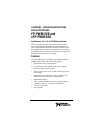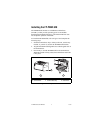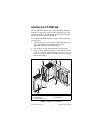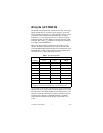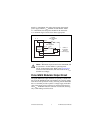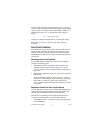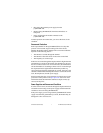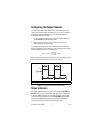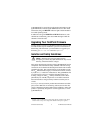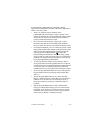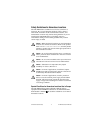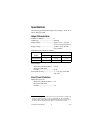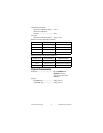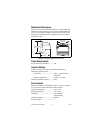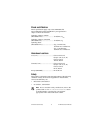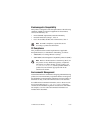© National Instruments Corp. 7 FP-PWM-520 and cFP-PWM-520
• Disconnect the external power supply from the
[c]FP-PWM-520.
• Remove the [c]FP-PWM-520 from the terminal base or
backplane.
• Power off the network module connected to the
[c]FP-PWM-520.
Normal operation can resume after you correct the short-circuit
condition.
Overcurrent Protection
Each output channel on the [c]FP-PWM-520 has circuitry that
protects it from current surges resulting from short circuits.
Whether the module suffers damage from overcurrent conditions
depends on the following factors:
• The amount of current through the channel
• The amount of time the current is above the current limit
• The frequency of current surges
If the level of current through the output terminal is higher than the
guaranteed trip current for the module, the channel trips and goes
into an overcurrent state. In an overcurrent state, the channel turns
off and the module is not damaged. If the level of current through
the output terminal is higher than the minimum possible trip
current and lower than the guaranteed trip current, the state of the
channel is indeterminate and depends on factors such as the current
level, the temperature, and the power supply.
Inrush currents that exist for less than the trip time do not trip the
protection circuitry. Refer to the Specifications section for more
information about the maximum continuous output current, trip
current, and trip time.
Power Supplies and Overcurrent Conditions
If a short circuit occurs, the current through an output terminal can
exceed the current rating for the power supply and the maximum
continuous current for the [c]FP-PWM-520.
If the power supply you are using with the [c]FP-PWM-520 cannot
supply more than the guaranteed trip current, the module may be
damaged if a short circuit occurs.



